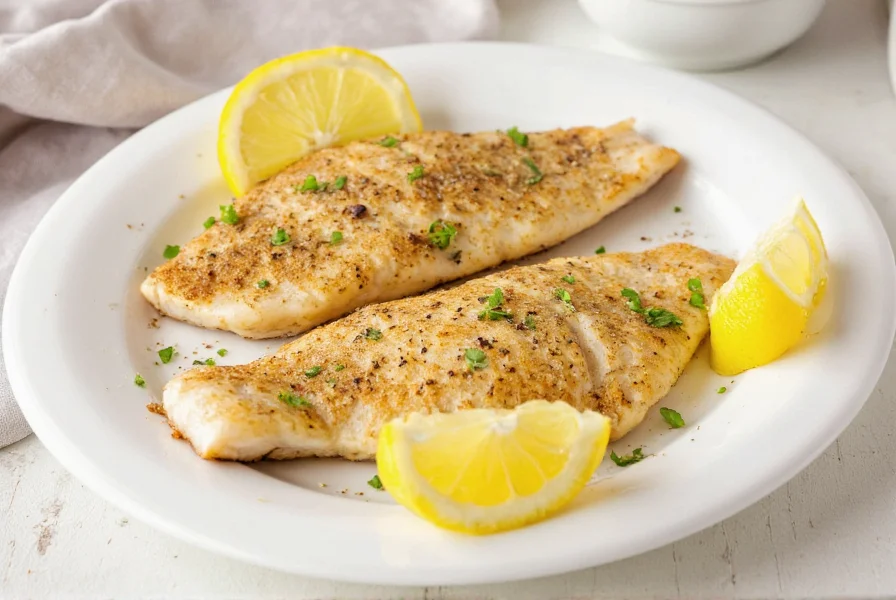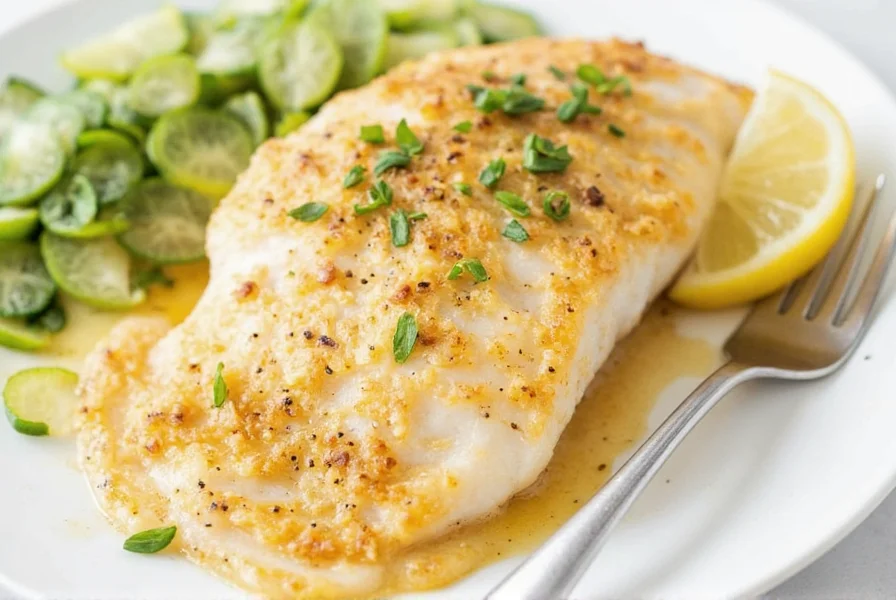If you're searching for a quick, nutritious dinner option that doesn't compromise on flavor, lemon pepper tilapia delivers exceptional results with minimal effort. This versatile dish has gained popularity among home cooks for its perfect balance of zesty citrus and aromatic pepper notes that complement tilapia's mild flavor without overwhelming it.
Why Lemon Pepper Works Perfectly with Tilapia
Tilapia's naturally mild taste makes it an ideal canvas for bold seasonings like lemon pepper. Unlike stronger fish varieties, tilapia absorbs flavors beautifully without competing with them. The acidity from lemon brightens the fish while pepper adds subtle heat and complexity. This combination creates a restaurant-quality dish that appears sophisticated but requires only basic cooking skills.
Essential Ingredients for the Best Lemon Pepper Tilapia
The magic happens with simple ingredients you likely already have in your pantry. For four servings, you'll need:
| Ingredient | Quantity | Why It Matters |
|---|---|---|
| Fresh tilapia fillets | 4 (4-6 oz each) | Freshness ensures optimal texture; frozen works but requires thorough thawing |
| Lemon zest and juice | 1 lemon | Zest contains concentrated flavor oils; juice adds brightness without excess liquid |
| Freshly cracked black pepper | 1½ tsp | Freshly ground provides superior flavor and aroma compared to pre-ground |
| Garlic powder | ½ tsp | Adds depth without burning like fresh garlic might |
| Olive oil or melted butter | 1 tbsp | Helps seasoning adhere and prevents drying during cooking |
| Salt | To taste | Enhances all other flavors; use sparingly as tilapia is naturally mild |
Step-by-Step Preparation Guide
Follow these professional techniques for perfect lemon pepper tilapia every time:
- Prepare the fish: Pat fillets completely dry with paper towels—this critical step ensures proper browning and prevents steaming.
- Create the seasoning blend: In a small bowl, combine lemon zest, freshly cracked black pepper, garlic powder, and salt.
- Season properly: Brush both sides of fillets with olive oil, then evenly sprinkle seasoning mixture, pressing gently to help it adhere.
- Rest before cooking: Let seasoned fish sit for 5-10 minutes at room temperature to allow flavors to penetrate.
- Cook using your preferred method:
Cooking Method Comparison
| Method | Temperature | Time | Best Results |
|---|---|---|---|
| Oven baking | 400°F (200°C) | 12-15 minutes | Even cooking throughout; ideal for multiple servings |
| Pan-searing | Medium-high heat | 3-4 minutes per side | Crispy exterior with tender interior; requires attention |
| Air frying | 375°F (190°C) | 8-10 minutes | Quick cooking with crispy texture; excellent for weeknights |
Pro Tips for Perfect Lemon Pepper Tilapia
Achieve restaurant-quality results with these professional techniques:
- Don't overcrowd the pan: When pan-searing, leave space between fillets to ensure proper browning rather than steaming.
- Check internal temperature: Cook until fish reaches 145°F (63°C) at the thickest part—this guarantees perfect doneness without drying.
- Add lemon juice after cooking: Squeeze fresh lemon juice over the cooked fish to preserve its bright flavor, which can diminish with heat exposure.
- Rest before serving: Let fish rest for 2-3 minutes after cooking to allow juices to redistribute.

Common Mistakes to Avoid
Even simple recipes can go wrong without proper technique. Steer clear of these pitfalls:
- Overcooking: Tilapia cooks quickly and becomes dry and rubbery when overcooked—check early and often.
- Using bottled lemon juice: Fresh lemon provides superior flavor; bottled versions contain preservatives that affect taste.
- Skipping the pat-dry step: Moisture prevents proper browning and causes fish to stick to cooking surfaces.
- Seasoning too early: Salt draws out moisture; apply just before cooking for best texture.
Nutritional Benefits of Lemon Pepper Tilapia
This dish offers impressive nutritional advantages that make it ideal for health-conscious eaters:
- Excellent source of lean protein (22g per 4-ounce serving)
- Rich in omega-3 fatty acids that support heart and brain health
- Low in calories (approximately 130 calories per serving)
- Naturally gluten-free and adaptable for various dietary needs
- Provides essential vitamins including B12 and selenium
Serving Suggestions and Pairings
Elevate your lemon pepper tilapia with these complementary sides that create a balanced meal:
- Vegetable pairings: Roasted asparagus, garlic green beans, or lemon-dill broccoli
- Starch options: Quinoa pilaf, roasted sweet potatoes, or cilantro-lime rice
- Sauces: Light lemon-dill sauce, mango salsa, or garlic herb butter
- Wine pairing: Crisp Sauvignon Blanc or unoaked Chardonnay

Storage and Reheating Instructions
While lemon pepper tilapia tastes best fresh, proper storage maintains quality for leftovers:
- Refrigeration: Store in airtight container for up to 2 days
- Reheating: Warm gently in oven at 275°F (135°C) for 8-10 minutes—avoid microwaving which makes fish rubbery
- Freezing: Not recommended as fish texture deteriorates significantly when frozen
Variations to Try
Customize your lemon pepper tilapia with these creative adaptations:
- Cajun twist: Add ¼ tsp cayenne and smoked paprika to the seasoning blend
- Mediterranean style: Include dried oregano and top with cherry tomatoes and Kalamata olives
- Herb-infused: Mix chopped fresh dill or parsley into the seasoning mixture
- Citrus variation: Substitute lime or orange for lemon for different flavor profiles
Frequently Asked Questions
Can I use frozen tilapia for lemon pepper tilapia?
Yes, but proper thawing is essential. Place frozen tilapia in the refrigerator for 24 hours before cooking. Never cook frozen tilapia directly as it will release excess moisture, preventing proper browning and resulting in a steamed texture rather than seared.
How do I know when lemon pepper tilapia is done cooking?
Tilapia is done when it reaches an internal temperature of 145°F (63°C) and flakes easily with a fork. The flesh should turn opaque white throughout. Overcooked tilapia becomes dry and rubbery, so check early—cooking time varies based on fillet thickness.
What's the difference between lemon pepper seasoning and making it fresh?
Store-bought lemon pepper often contains fillers and preservatives, while fresh preparation lets you control ingredient quality and ratios. Fresh lemon zest provides brighter flavor than dried lemon in commercial blends, and freshly cracked pepper offers superior aroma and heat. For best results, make your own blend with fresh ingredients.
Can I substitute other fish for tilapia in this recipe?
Yes, this seasoning works well with many mild white fish including cod, haddock, or sole. Adjust cooking time based on thickness—thicker cuts like cod may need 2-3 additional minutes. Avoid stronger fish like salmon which would compete with the lemon pepper flavors.
Why does my lemon pepper tilapia stick to the pan?
Fish sticks when the pan isn't hot enough or when fillets aren't properly dried. Ensure your cooking surface is sufficiently preheated (a drop of water should sizzle immediately), and thoroughly pat fillets dry before seasoning. Don't move the fish during the first 2 minutes of cooking to allow a crust to form.











 浙公网安备
33010002000092号
浙公网安备
33010002000092号 浙B2-20120091-4
浙B2-20120091-4